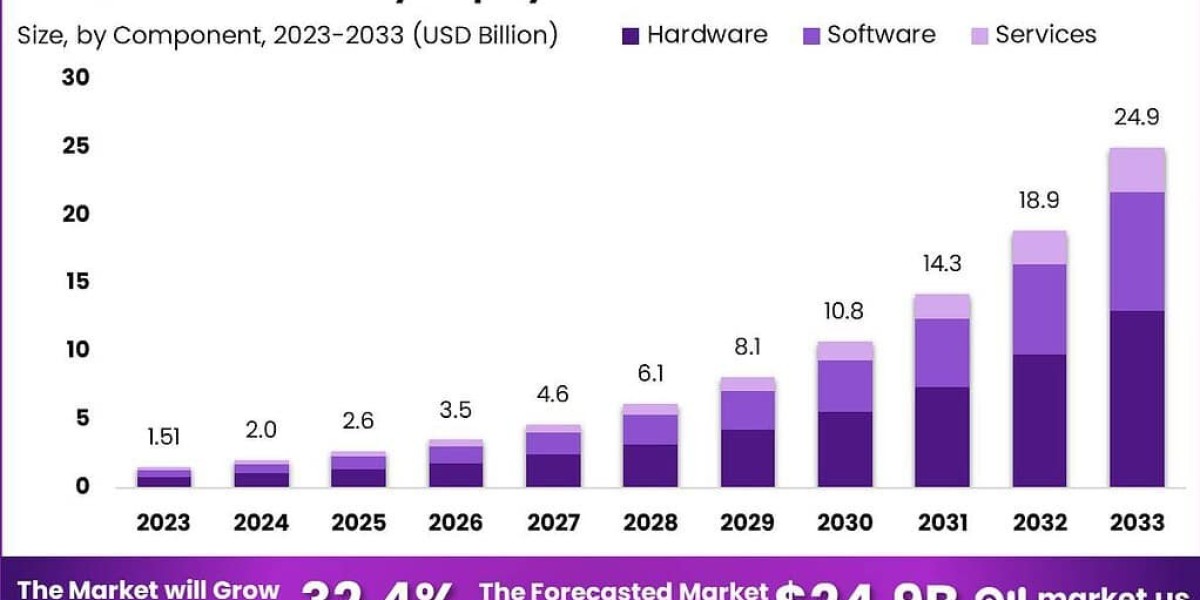The Global Extended Reality (XR) Display Market is projected to surge from USD 1.5 billion in 2023 to USD 24.9 billion by 2033, growing at a robust CAGR of 32.4%. This exponential growth reflects heightened demand across gaming, healthcare, education, and enterprise training. Innovations in display resolution, miniaturization, and user immersion are driving adoption, while demand is being amplified by the increasing deployment of XR in remote collaboration, simulation, and real-time visualization. The market’s expansion is catalyzed by advancing AR/VR/MR technologies and the evolving need for next-gen interactive experiences across industries.
Key Takeaways
Market to reach USD 24.9 billion by 2033.
CAGR of 32.4% from 2024 to 2033.
Initial market valuation stood at USD 1.5 billion in 2023.
XR displays increasingly adopted in gaming, education, and healthcare.
High demand from enterprise training and remote collaboration sectors.
Dominant Market Position
North America holds a leading position in the XR display market due to early technological adoption, significant R&D investments, and strong demand in gaming and enterprise applications. The region is followed by Asia-Pacific, where countries like China, Japan, and South Korea are aggressively innovating in hardware and 5G infrastructure. Europe also plays a critical role in driving demand, especially in automotive and healthcare simulations. Global players compete on display resolution, weight reduction, and immersive fidelity. Market leadership is shaped by proprietary display technologies, integration capabilities, and strategic partnerships across XR ecosystems.
Technology Perspective
The XR display market is shaped by rapid advances in OLED, MicroLED, and Liquid Crystal on Silicon (LCoS) technologies, which offer higher resolution, reduced latency, and lower power consumption. Head-mounted displays (HMDs), smart glasses, and spatial computing devices are incorporating eye-tracking, foveated rendering, and adaptive brightness. AR displays are pushing boundaries with waveguide optics, while VR units continue to evolve through wider field-of-view lenses and higher refresh rates. The fusion of AI with XR interfaces further enhances interactive responsiveness, unlocking immersive experiences in both consumer and industrial domains.
Dynamic Landscape
The XR display market is evolving through constant innovation, competitive pricing, and shifting user preferences. Start-ups and established tech giants are collaborating or acquiring niche players to solidify ecosystem control.
Drivers, Restraints, Opportunities, Challenges
Drivers include rising XR adoption in training and simulation. Restraints involve high hardware costs. Opportunities lie in 5G-powered mobile XR. Challenges include motion sickness and content standardization.
Use Cases
VR-based surgical simulations in healthcare
Immersive corporate training modules
Augmented maintenance in manufacturing
XR learning environments in education
Gaming headsets with high refresh rate displays
Real estate virtual walkthroughs
Key Players Analysis
Leading companies are investing heavily in high-resolution display modules and integrating XR with AI and spatial audio. They are prioritizing lightweight design and ergonomic comfort while scaling production capabilities. Strategic partnerships with content creators, software providers, and chipmakers are common. Their focus is on modular XR platforms that offer plug-and-play compatibility across enterprise and consumer segments. Several firms are targeting verticals like defense, architecture, and telemedicine to diversify use cases and revenue streams. Global expansion is a key priority, especially in emerging markets with rising tech adoption and infrastructural support.
Recent Developments
Launch of ultra-lightweight XR glasses with MicroLED displays
Introduction of 4K-per-eye VR headsets for enterprise use
Strategic alliances to develop AI-integrated XR toolkits
Investments in content libraries for immersive training
Development of eye-tracking-enabled adaptive displays
Conclusion
The XR display market is on a steep upward trajectory, powered by technological breakthroughs and expanding applications. As enterprises and consumers increasingly seek immersive, interactive experiences, the market is expected to witness sustained innovation and strong competitive dynamics.






